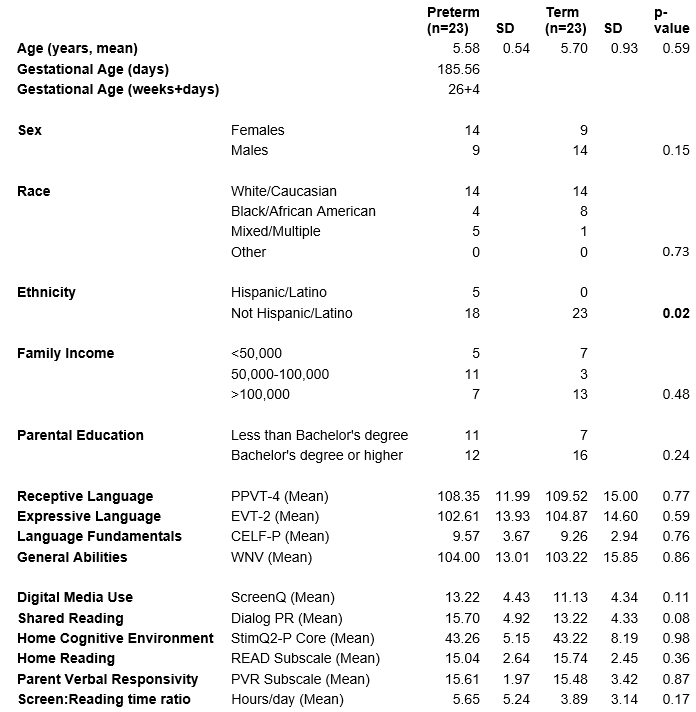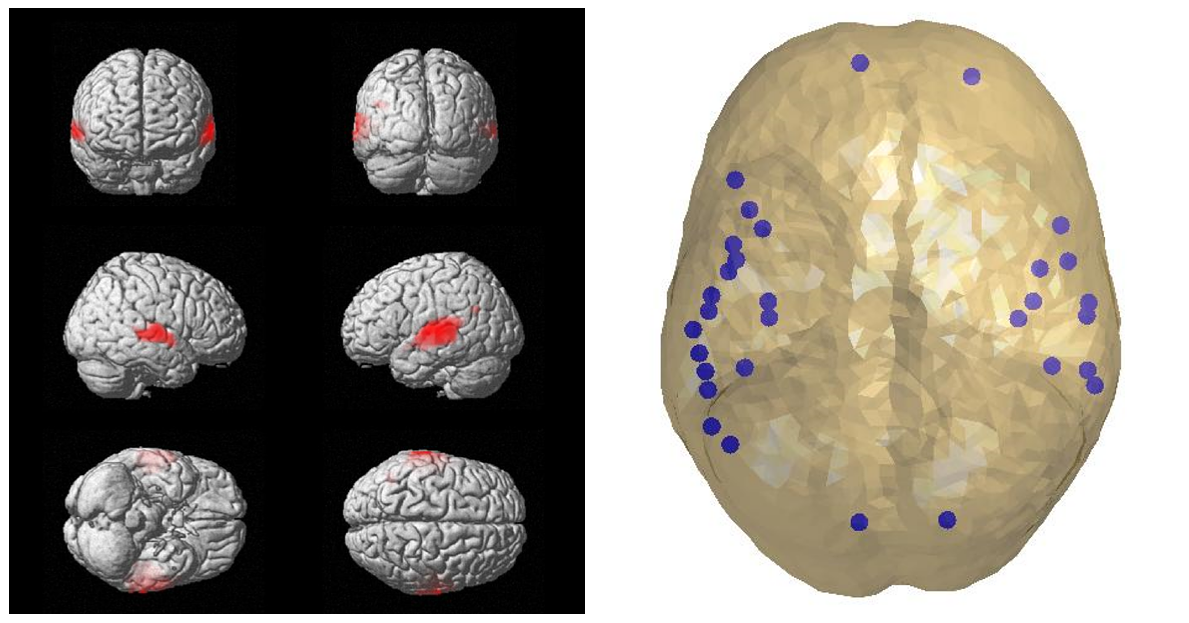Neonatology
Session: Neonatal Follow-up 3
541 - Relationship of Digital Media Use and Home Literacy Environment on Functional Brain Connections and Language in Children Born Extremely Preterm
Monday, May 6, 2024
9:30 AM - 11:30 AM ET
Poster Number: 541
Publication Number: 541.3064
Publication Number: 541.3064

Kaitlyn Kelly, MD (she/her/hers)
Fellow
Cincinnati Children's Hospital Medical Center
Cincinnati, Ohio, United States
Presenting Author(s)
Background: Language delays are common in extremely preterm (EPT, < 28 weeks) children, who may also be prone to adverse effects of digital media use. Digital media use and home literacy environment are associated with language skills and functional connectivity in term controls (TC). Functional and structural connectivity studies in preterm children show reduced left-lateralization of language and literacy compared to TC, which may reflect reduced efficiency.
Objective: Investigate the association of language outcomes and functional connectivity with environmental factors in this pilot study.
Design/Methods: 46 children (23 TC, 23 EPT – 5 with history of language delay and 18 without delay) aged 4 to 6 years were enrolled. 32 children (17 TC, 15 EPT) are included in magnetoencephalography (MEG) analysis. Language testing and validated measures of digital media use, shared reading, and home cognitive stimulation were administered. A stories-listening task was completed during fMRI (Philips Achieva 3.0T scanner) and MEG (275-channel whole-head CTF system; 1200 Hz) as in prior studies (Barnes-Davis, 2021). A fMRI activation map was generated and parcellated into 200 random units; parcels with 25% activated voxels were used as nodes for MEG connectivity analysis (Fig 1). Intra- and inter-hemispheric connections between nodes were evaluated, expressed as a ratio of within- to between-hemisphere connections, and correlated to neurobehavioral metrics.
Results: There were no significant group differences in demographics, language scores, or environmental metrics aside from more EPT who self-identified as Hispanic (Table 1). Across groups, increased digital media use negatively correlated with language scores while higher quality literacy environment positively correlated with language scores (Fig 2). For EPT, parent verbal responsivity positively correlated with receptive language (r=0.631, p=0.005). There were no significant differences in fMRI activation. On MEG analysis, the ratio of intra-hemispheric (left-left, right-right) versus inter-hemispheric (left-right, right-left) connections positively correlated with higher screen time compared to reading time across groups (Fig 2). The presence of more within- versus between-hemisphere connections was associated with more screen time versus reading time.
Conclusion(s): Language scores and the ratio of intra- to inter-hemispheric connectivity on MEG were correlated with potentially modifiable environmental factors (digital media use, shared reading, home cognitive stimulation) among TC and EPT; these relationships may help inform early interventions and guidance for EPT.


.png)
